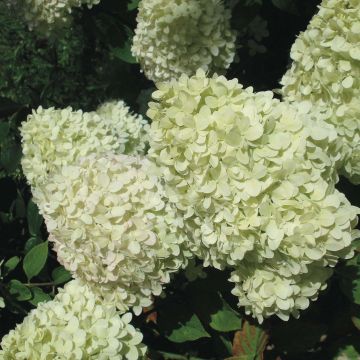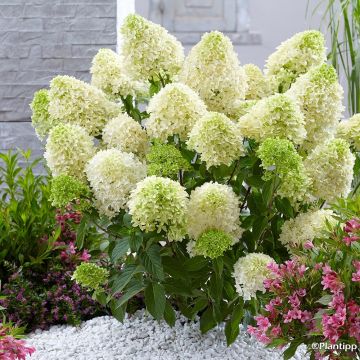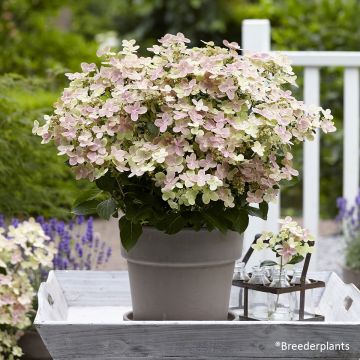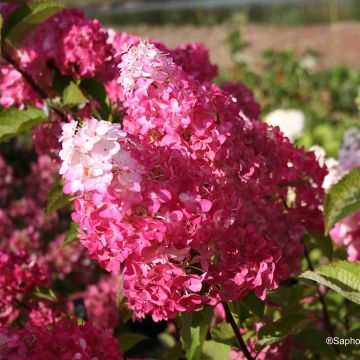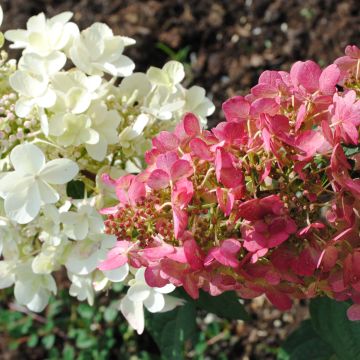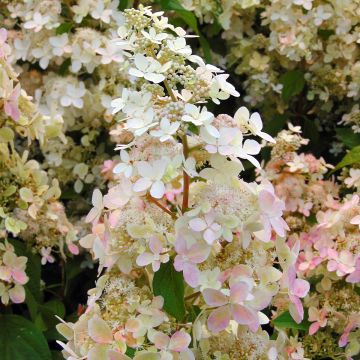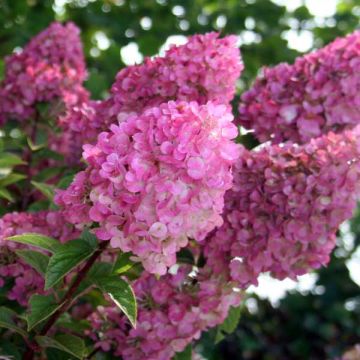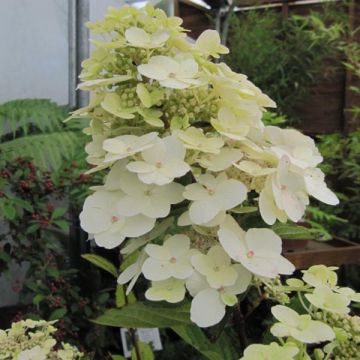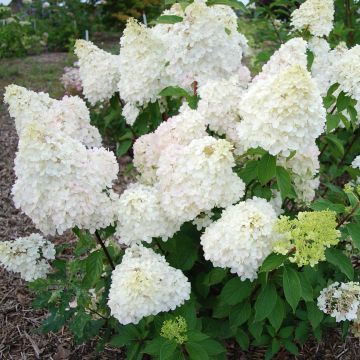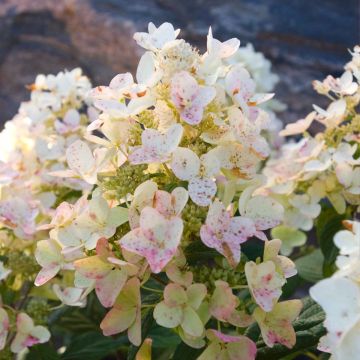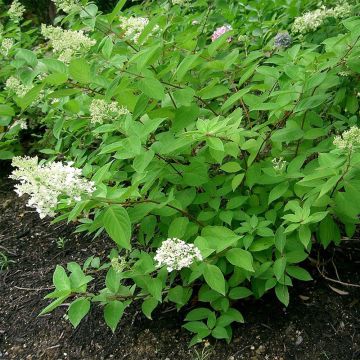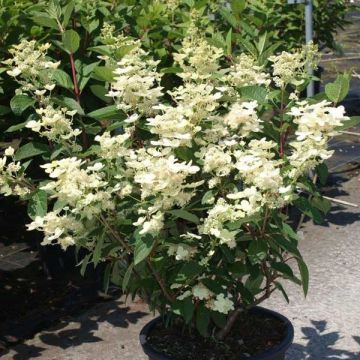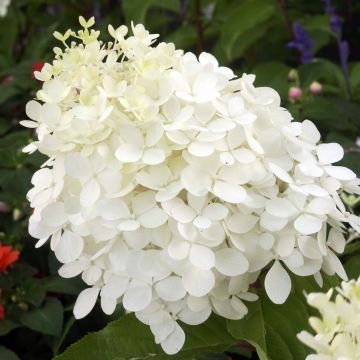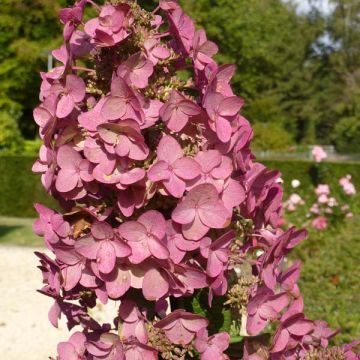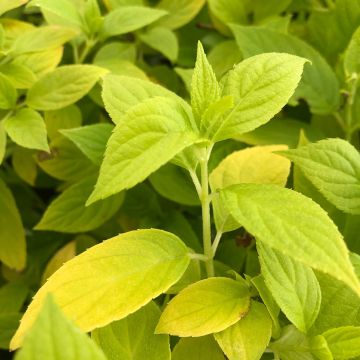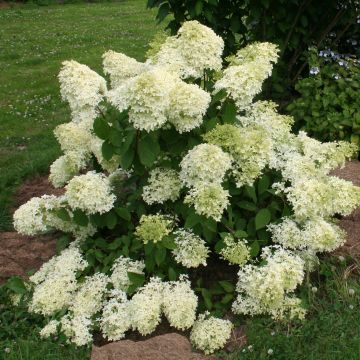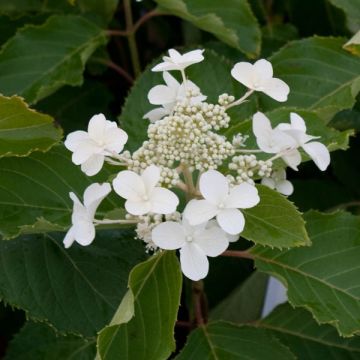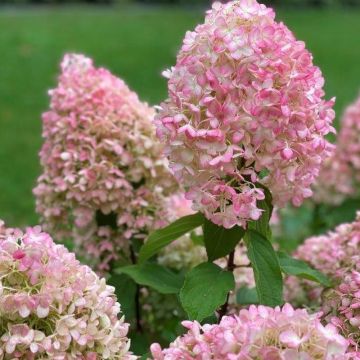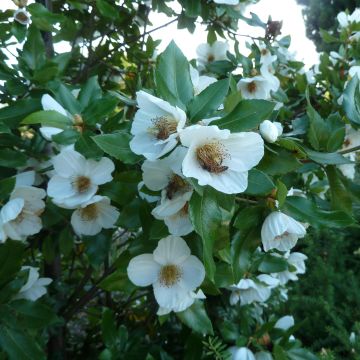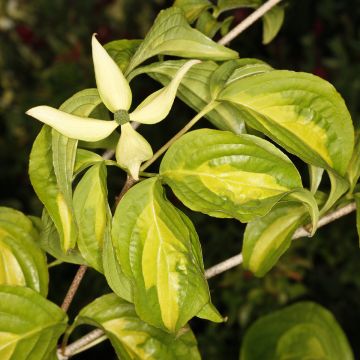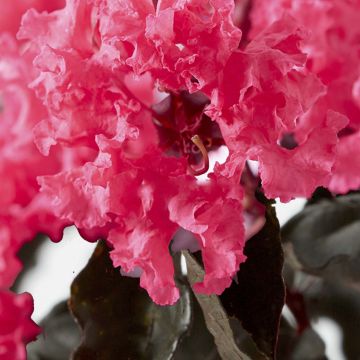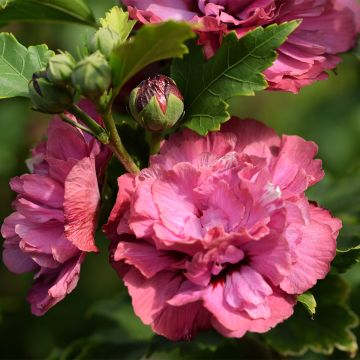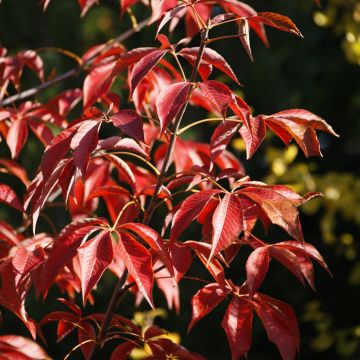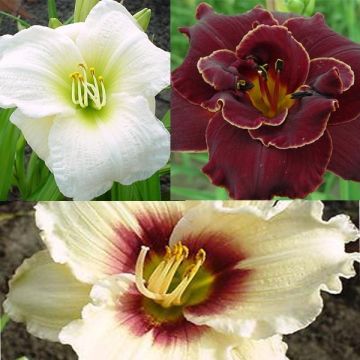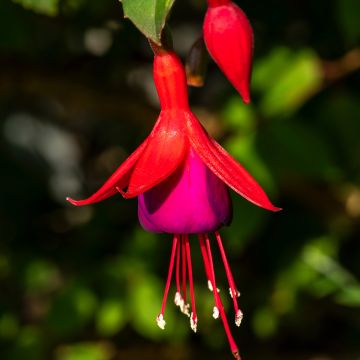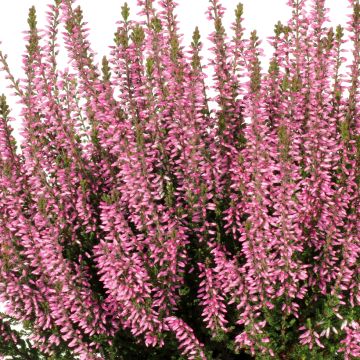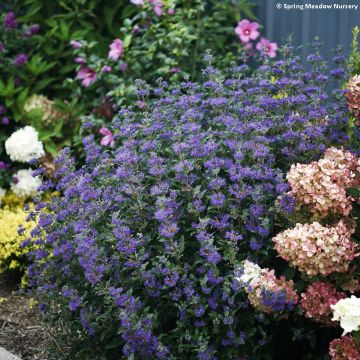Shipping country and language
Your country of residence may be:
Your country of residence is:
For a better user experience on our website, you can select:
Your shipping country:
Andorra
Austria
Belgium
Bulgaria
Canada
Chile
Croatia
Cyprus
Czechia
Denmark
Estonia
Finland
France
Germany
Greece
Hungary
Iceland
Ireland
Italy
Latvia
Lithuania
Luxembourg
Malta
Monaco
Netherlands
Poland
Portugal
Romania
Slovakia
Slovenia
Spain
Sweden
Switzerland
United Kingdom
We only deliver seed and bulb products to your country. If you add other products to your basket, they cannot be shipped.
Language:
French
German
Spanish
English
My Account
Hello
My wish lists
Plantfit
Log in / Register
Existing customer?
New customer?
Create an account to track your orders, access our customer service and, if you wish, make the most of our upcoming offers.
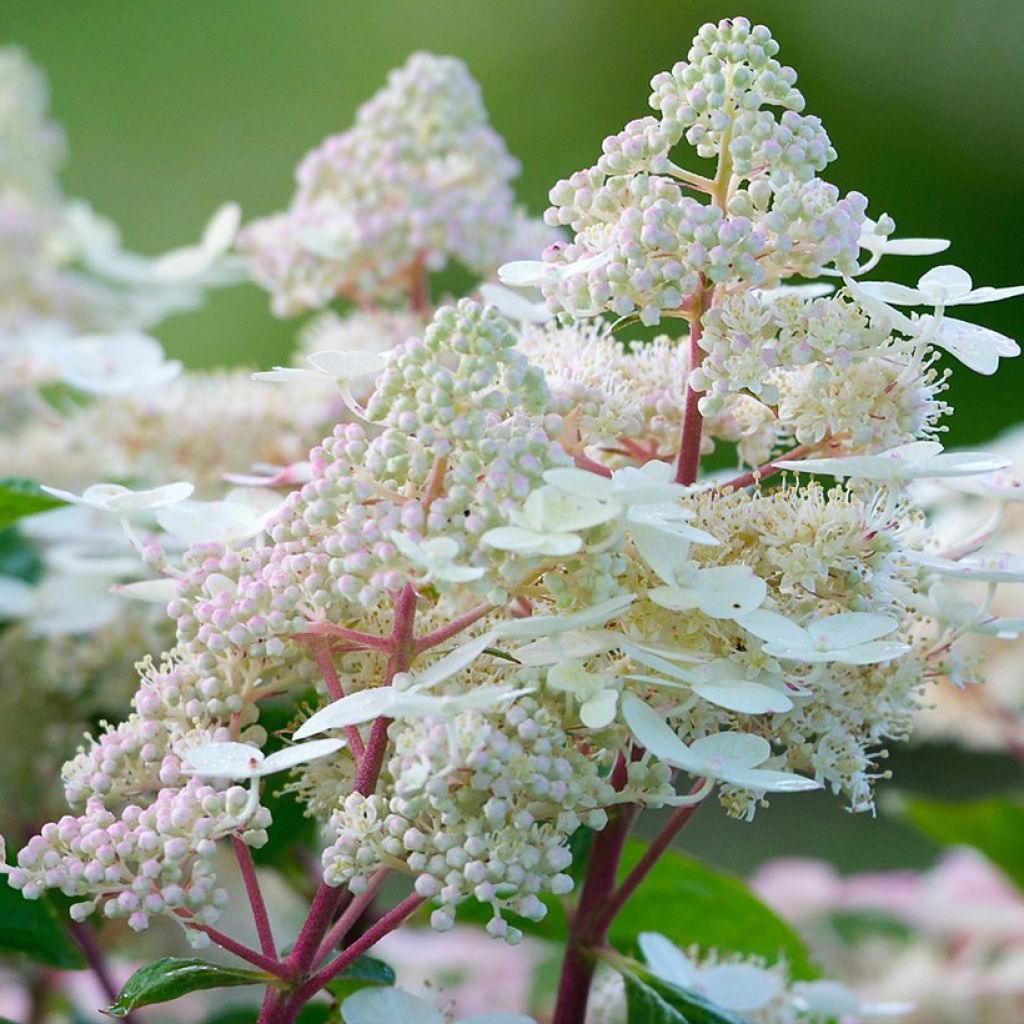

Hortensia paniculé - Hydrangea paniculata Early Harry 'HPOPR018'
Hydrangea paniculata Early Harry
Hydrangea paniculata Early Harry HPOPR018
Paniculate Hydrangea, Panicled Hydrangea, Panicle Hydrangea
Why not try an alternative variety in stock?
View all →Order in the next for dispatch today!
Dispatch by letter from €3.90.
Delivery charge from €5.90 Oversize package delivery charge from €6.90.
More information
This item is not available in your country.
Schedule delivery date,
and select date in basket
This plant carries a 24 months recovery warranty
More information
We guarantee the quality of our plants for a full growing cycle, and will replace at our expense any plant that fails to recover under normal climatic and planting conditions.
From €5.90 for pickup delivery and €6.90 for home delivery
Express home delivery from €8.90.
Does this plant fit my garden?
Set up your Plantfit profile →
Description
Hydrangea paniculata Early Harry is an original and delicate variety of paniculate hydrangea that also stands out for its particularly early flowering. This vigorous and rather slender shrub, equipped with dark red young stems, produces panicles of white flowers with delicate architecture in the shape of pagodas, which become quite pink over time. It will find its place in a hedge or a large, rather sunny massif. Cultivation in a large pot is also possible.
Hydrangea paniculata, also called Paniculate Hydrangea, is a species of hydrangea belonging to the Hydrangeaceae family native to the leafy woods of China and Japan. It is a particularly hardy plant that is not very demanding in terms of soil. This shrub is easy to grow in any good garden soil, even soil with a little limestone, provided it remains a little moist even in summer. It has given rise to a beautiful range of cultivars of all sizes and varied flowers.
Hydrangea paniculata Early Harry 'HPOPR018' is a horticultural creation by Harry van Trier dating from before 2017. This variety is the result of cross-breeding with the 'Daruma' variety. Like 'Early Sensation' and 'Wim's Red', it belongs to the varieties of early-flowering Hydrangea paniculata. The shrub shows a medium development and a more upright habit than most other paniculata varieties. At maturity, this variety will reach about 1.8 m (5 ft 11 in) and even up to 2.3 m (7 ft 6 in) in height for 1.5 m (4 ft 11 in) to 1.75 m (5 ft 8 in) in width. From mid-June, numerous pyramidal flower panicles, with staggered branching, blossom on the year's shoots. They contain numerous small fertile florets and a few larger sterile florets, evolving from cream-white to a more and more vivid pink as they age. From spring, the reddish shoots bear finely dentate, ovate leaves of a fairly light green colour, 5 to 12 cm (2 to 4.7 in) long and 5 to 6 cm wide. They turn yellow in autumn before disappearing in winter. Paniculate hydrangeas are less sensitive to late frosts, as they mostly bloom on the year's shoots. This variety will withstand -20 °C (-4 °F), or even below.
Hydrangea paniculata Early Harry differs from its cousins, the large-leaved hydrangeas (Hydrangea macrophylla) by its good tolerance to sun, sea spray and relative drought. Installed in well-loosened garden soil without too much limestone, in a few seasons this shrub forms a beautiful specimen with abundant flowers for three months. Install it alone, in a hedge or in a massif, or even in clear undergrowth, mixed with other hydrangeas and perpetual roses to play with contrasts and shapes. You can also combine it with grasses such as Miscanthus, Panicum virgatum Squaw and Stipa. It can also be grown in a large pot on the terrace, with regular applications of fertiliser and watering.
Plant habit
Flowering
Foliage
Botanical data
Hydrangea
paniculata
Early Harry HPOPR018
Hydrangeaceae
Paniculate Hydrangea, Panicled Hydrangea, Panicle Hydrangea
Cultivar or hybrid
Other Hydrangea Paniculata
Planting and care
Hydrangea paniculata Early Harry is not particularly demanding about the nature of the soil, as long as it is not too heavy or chalky, and is kept rather fresh but without excess moisture. It requires a sunny but non-scorching exposure, or partial shade. When planting, install it in a deeply worked soil. A good base fertiliser (horn or dried blood) will aid the recovery of your plant and feed it without risk of burning. If your soil tends to be dry, mix a good quality compost with the soil when filling in the planting hole and provide a watering basin on the surface. Also place a vegetable mulch at its base to save on watering in summer.
At the end of summer, we advise you not to cut off the dry panicles which will protect the terminal shoots of the branches in winter; you should cut off all the dry flowers at the end of February or on the first summer days. The plant's spring vegetation appears rather late.
Hydrangea paniculata must be pruned at the end of winter to produce more inflorescences and maintain a dense habit. Apart from deliberately limiting the expansion of the bush if it has become too large, you should be careful not to remove the two-year-old branches, as doing so will compromise the development of the plant.
Hydrangea Paniculata is a little more resistant to drought and establishes itself easily even in non-acidic soil. It blooms generously from June until the first frosts. When planted in the sun, its inflorescences change colour at the end of the season.
Planting period
Intended location
Care
This item has not been reviewed yet - be the first to leave a review about it.
Summer-flowering shrubs
Haven't found what you were looking for?
Hardiness is the lowest winter temperature a plant can endure without suffering serious damage or even dying. However, hardiness is affected by location (a sheltered area, such as a patio), protection (winter cover) and soil type (hardiness is improved by well-drained soil).

Photo Sharing Terms & Conditions
In order to encourage gardeners to interact and share their experiences, Promesse de fleurs offers various media enabling content to be uploaded onto its Site - in particular via the ‘Photo sharing’ module.
The User agrees to refrain from:
- Posting any content that is illegal, prejudicial, insulting, racist, inciteful to hatred, revisionist, contrary to public decency, that infringes on privacy or on the privacy rights of third parties, in particular the publicity rights of persons and goods, intellectual property rights, or the right to privacy.
- Submitting content on behalf of a third party;
- Impersonate the identity of a third party and/or publish any personal information about a third party;
In general, the User undertakes to refrain from any unethical behaviour.
All Content (in particular text, comments, files, images, photos, videos, creative works, etc.), which may be subject to property or intellectual property rights, image or other private rights, shall remain the property of the User, subject to the limited rights granted by the terms of the licence granted by Promesse de fleurs as stated below. Users are at liberty to publish or not to publish such Content on the Site, notably via the ‘Photo Sharing’ facility, and accept that this Content shall be made public and freely accessible, notably on the Internet.
Users further acknowledge, undertake to have ,and guarantee that they hold all necessary rights and permissions to publish such material on the Site, in particular with regard to the legislation in force pertaining to any privacy, property, intellectual property, image, or contractual rights, or rights of any other nature. By publishing such Content on the Site, Users acknowledge accepting full liability as publishers of the Content within the meaning of the law, and grant Promesse de fleurs, free of charge, an inclusive, worldwide licence for the said Content for the entire duration of its publication, including all reproduction, representation, up/downloading, displaying, performing, transmission, and storage rights.
Users also grant permission for their name to be linked to the Content and accept that this link may not always be made available.
By engaging in posting material, Users consent to their Content becoming automatically accessible on the Internet, in particular on other sites and/or blogs and/or web pages of the Promesse de fleurs site, including in particular social pages and the Promesse de fleurs catalogue.
Users may secure the removal of entrusted content free of charge by issuing a simple request via our contact form.
The flowering period indicated on our website applies to countries and regions located in USDA zone 8 (France, the United Kingdom, Ireland, the Netherlands, etc.)
It will vary according to where you live:
- In zones 9 to 10 (Italy, Spain, Greece, etc.), flowering will occur about 2 to 4 weeks earlier.
- In zones 6 to 7 (Germany, Poland, Slovenia, and lower mountainous regions), flowering will be delayed by 2 to 3 weeks.
- In zone 5 (Central Europe, Scandinavia), blooming will be delayed by 3 to 5 weeks.
In temperate climates, pruning of spring-flowering shrubs (forsythia, spireas, etc.) should be done just after flowering.
Pruning of summer-flowering shrubs (Indian Lilac, Perovskia, etc.) can be done in winter or spring.
In cold regions as well as with frost-sensitive plants, avoid pruning too early when severe frosts may still occur.
The planting period indicated on our website applies to countries and regions located in USDA zone 8 (France, United Kingdom, Ireland, Netherlands).
It will vary according to where you live:
- In Mediterranean zones (Marseille, Madrid, Milan, etc.), autumn and winter are the best planting periods.
- In continental zones (Strasbourg, Munich, Vienna, etc.), delay planting by 2 to 3 weeks in spring and bring it forward by 2 to 4 weeks in autumn.
- In mountainous regions (the Alps, Pyrenees, Carpathians, etc.), it is best to plant in late spring (May-June) or late summer (August-September).
The harvesting period indicated on our website applies to countries and regions in USDA zone 8 (France, England, Ireland, the Netherlands).
In colder areas (Scandinavia, Poland, Austria...) fruit and vegetable harvests are likely to be delayed by 3-4 weeks.
In warmer areas (Italy, Spain, Greece, etc.), harvesting will probably take place earlier, depending on weather conditions.
The sowing periods indicated on our website apply to countries and regions within USDA Zone 8 (France, UK, Ireland, Netherlands).
In colder areas (Scandinavia, Poland, Austria...), delay any outdoor sowing by 3-4 weeks, or sow under glass.
In warmer climes (Italy, Spain, Greece, etc.), bring outdoor sowing forward by a few weeks.
